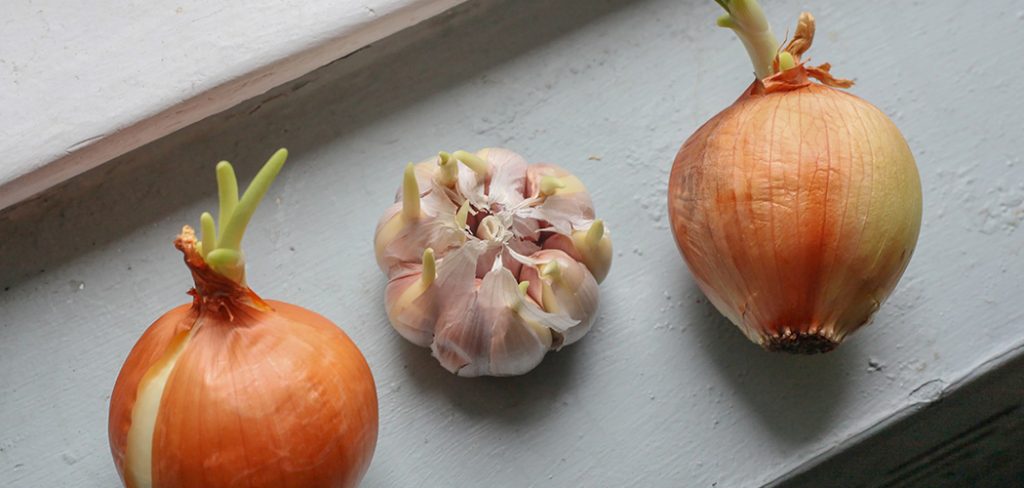Green skin on potatoes? Green is the color of nature and life. It symbolizes renewal and energy. It’s even said that green is the most relaxing color for the human eye. Looking at green-colored things generally refresh your eyes and heals you in a sense.
And while green is a nice color, especially for your garden, it doesn’t always signify growth and fertility. Green signifies luck especially in Ireland, but it’s actually quite the opposite if you see green skin on potatoes.
There are two reasons as to why potato skins turn green. One is because it’s been exposed to light. When this happens, chlorophyll gets produced by the potato, which explains why it turns green.
Normally, this wouldn’t be toxic for consumption. However, there’s another reason as to why greening happens – the production of more solanine. This is a harmful plant compound that may bring about serious dangers to your health once consumed.
Can You Eat Potatoes with a Green Tinge?
The safe answer here is no. There are some cases where the green tinge is really only caused by exposure to sunlight. But it’s risky since you can’t really tell where the green tinge of the potato skin comes from.
Low levels of solanine are present in potatoes. However, exposure to sunlight triggers the potato to produce more solanine. Which may bring damage to your cell membrane once consumed.
There are some instances where a potato turns green quickly but prove to only have low levels of solanine. On the other hand, there are some instances where only a little green tinge appears on the potato skin. But prove to already have high levels of solanine.
So, can you eat potatoes with a green tinge? It really isn’t advisable, but if you still don’t want to give up on the potatoes you’ve worked so hard in growing, you may try peeling the skin off your potatoes.
Because the green tinge of potatoes is mostly on the skin, peeling it off will definitely reduce the level of solanine in your potato. However, more than half of it remains on the flesh of the potato, especially for those with high concentrations of solanine in them.
Sadly, boiling or cooking green-skinned potatoes won’t help reduce its solanine levels either. The moment you taste bitterness in your potato, immediately throw it away. Bitterness is a great indicator of the presence of solanine.
Symptoms
If you experience nausea, diarrhea, stomach pain, vomiting, and even headaches after eating green potatoes, that usually means you have solanine poisoning. These are considered mild symptoms and should go away within 24 hours or so.
However, if they persist, you should definitely go see a doctor about it. Extreme cases of solanine poisoning may include paralysis, convulsions, comatose, and even death.
It’s scary and too risky, but if it makes you feel any better, not many people report having experienced solanine poisoning. Of course, it can’t be ruled out that some cases may have been misreported for another type of poisoning or for other conditions since the symptoms of solanine poisoning are fairly generic and vague.
You should always still be careful about green skin on potatoes.
How Green is Too Green for a Potato?
If your potato only has a few little green spots, you can just cut them off. Remember to also cut off the sprouts of a potato, as it has been found that solanine levels have high concentration on that area.
There’s really no saying as to how green is too green for a potato. People have different sensitivities to green potatoes, which is why there’s no standard amount to watch out for.
There have been some cases where the potatoes didn’t have green skin but once peeled revealed a green tinge on the flesh just under the skin. It may have been because the potato was a little darker in color, thus making it difficult to see the green tinge.
If you see this, assess the amount of green tinge on the potato. If it can be cut off, it’s upon your discretion if you’d still choose to eat the potato.
Just remember that bitter-tasting potatoes are best thrown away in the trash.
How to Fix Green Potatoes
If you’re storing potatoes at home, make sure to place them somewhere cool and dark like a basement. Store the potatoes in an opaque and sealed plastic bag or sack so that they don’t get exposed to light.
Don’t store your potatoes in the fridge as its temperature may increase solanine levels in the potato. You can’t store them at your pantry either, as it tends to be too warm for potatoes.
The best way to avoid having green skin on potatoes is to cover your potato seedlings with enough soil or mulch so that they wouldn’t get exposed to light.
If you have a bunch of green potatoes in your harvest, the best way on how to fix green potatoes is to store them like you usually would in a cool and dark area and just cut off the green parts before you cook them. If any part tastes bitter, spit it out immediately.
Conclusion
Now that you know all about green skin on potatoes, you’ll know what to do the next time you encounter them. Green potatoes are usually not good, so it’s best to get rid of them to avoid the risks of solanine poisoning.
If you’re buying your potatoes from the market, it would be best to inspect them well before buying them. Most green potatoes don’t make it to the market, but there are some instances where potatoes have been handled poorly and stored improperly, thus causing them to develop green skin.
Potatoes are a delight to eat and are very versatile in the kitchen, so make sure to take good care of your potato plants, not just during their growth but also in storage. You wouldn’t want your hard work to go to waste, right?
Always take caution in handling green potatoes!
Read my other articles on hacks for sustainable farming and tomato plants diseases and treatments.

